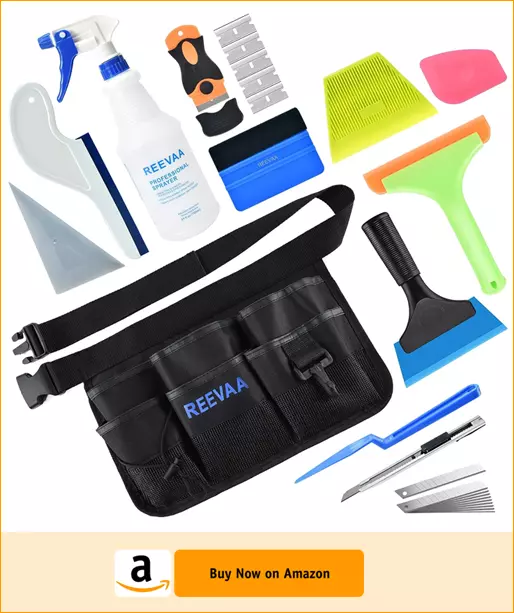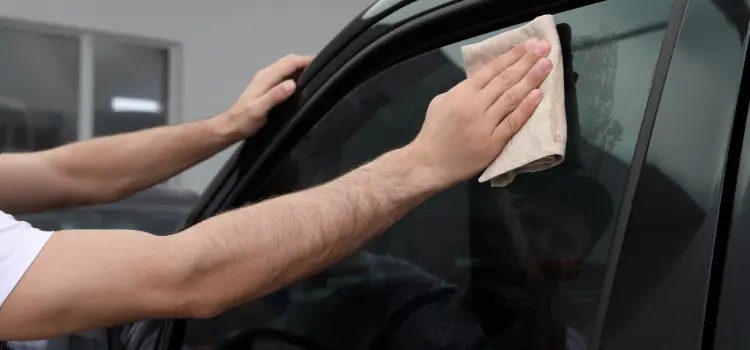Table of Contents
Window tinting is a valuable investment that enhances privacy, reduces heat, and protects against harmful UV rays. To ensure that your tinted windows provide long-lasting benefits, it is essential to take proper care of them. In this article, we will discuss effective strategies to extend the lifespan of your window tinting.
1 Understand the Basics of Window Tinting
Before diving into the maintenance tips, let’s take a moment to understand the basics of window tinting. Window tinting involves applying a thin film to the interior side of the window, which helps block sunlight, reduce heat, and protect against harmful UV rays. There are different types of window tints available, each offering distinct advantages:
- Dyed films: These window tints use a dye to achieve their color. They are an affordable option and can provide good heat reduction. However, they may not be as effective in blocking UV rays compared to other types.
- Metalized films: Metalized window tints contain microscopic metallic particles that reflect heat and UV rays. They offer excellent heat reduction and UV protection, but they can interfere with electronic signals like GPS or cell phone reception.
- Ceramic films: Ceramic window tints are the highest quality option. They are made of ceramic particles that are non-conductive and non-metallic. Ceramic films provide superior heat reduction, UV protection, and clarity without interfering with electronic signals.
Choosing the right type of window tint for your needs is crucial in maximizing its benefits and lifespan.
2 Choose High-Quality Window Tint Films

Selecting high-quality window tint films is a crucial step in ensuring their longevity. Investing in reputable brands and professional installation will ensure that the film adheres well to the glass surface and lasts for years to come. High-quality films are more resistant to fading, bubbling, and discoloration, providing better performance and durability.
When choosing window tint films, consider the following factors:
- Brand reputation: Research and choose reputable brands known for their quality and customer satisfaction.
- Warranty: Look for films that come with a warranty, as it indicates the manufacturer’s confidence in their product’s longevity.
- Professional installation: Hiring a professional to install the window tint ensures proper application and reduces the risk of premature peeling or bubbling.
Investing in high-quality window tint films and professional installation will pay off in the long run, as they are less likely to experience issues and require replacement.
3 Allow Sufficient Drying Time
After the window tint installation, it is important to allow sufficient drying time before cleaning or rolling down the windows. The adhesive used in window tint films takes time to cure and fully bond with the glass surface. Premature contact can lead to peeling or dislodging of the film, compromising its lifespan.
To ensure proper drying, follow these guidelines:
- Wait at least 48 hours before touching or cleaning the newly tinted windows. This time allows the adhesive to cure and bond effectively.
- Avoid rolling down the windows during the drying period, as it can disrupt the bonding process.
- If you notice any air bubbles or imperfections during the drying period, resist the temptation to touch or fix them yourself. Instead, contact the professional installer for assistance.
By allowing sufficient drying time, you ensure that the window tint film adheres properly and remains intact for a longer period.
4 Clean with Care
Regular cleaning is essential to keep your tinted windows looking their best. However, it is important to clean them with care to avoid causing any damage. Here are some tips for cleaning tinted windows:
- Use a soft, non-abrasive cloth or sponge to wipe the windows gently. Microfiber cloths are highly recommended as they are gentle on the film and effective in removing dirt and smudges.
- Avoid using ammonia-based or abrasive cleaning products, as they can degrade the film over time. Instead, opt for mild, non-ammonia based cleaners or specifically designed tint-safe cleaning solutions.
- Spray the cleaner onto the cloth or sponge rather than directly on the window to prevent liquid from seeping into the edges of the film. Excessive moisture can cause the film to peel or bubble.
- When wiping the windows, use gentle, circular motions. Avoid applying excessive pressure, as it can damage the film or cause it to peel off.
By following these cleaning guidelines, you can maintain the integrity of your window tinting and extend its lifespan.

5 Protect from Scratches and Abrasions
While window tint films are designed to be durable, they can still be susceptible to scratches and abrasions. To prevent damage, it is important to take precautions when using window accessories and cleaning tools. Here are some tips to protect your tinted windows:
- Avoid using sharp or hard-edged objects near the windows, as they can scratch or tear the film. Be cautious when using ice scrapers, key chains, or any other items that may come into contact with the windows.
- Use caution while loading and unloading items from your vehicle, particularly if they have rough or sharp edges. Place protective coverings or padding on surfaces near the windows to minimize the risk of accidental scratches.
- When cleaning, use gentle, sweeping motions rather than applying excessive pressure. Harsh scrubbing can cause scratches or damage to the film.
- Opt for microfiber or soft-bristle brushes for any detailing work, as they are less likely to cause scratches. Avoid using abrasive materials like steel wool or rough sponges.
By being mindful of potential hazards and handling your tinted windows with care, you can minimize the risk of scratches or abrasions and prolong their lifespan.
6 Shield from Direct Sunlight
Excessive exposure to direct sunlight can accelerate the fading and discoloration of window tint films. To protect your tinted windows from prolonged sun exposure, consider implementing the following measures:
- Park your vehicle in shaded areas or use a car cover to shield it from direct sunlight when not in use. This practice helps reduce the amount of UV rays and heat that reach the windows.
- Utilize sunshades or window visors to block out sunlight and reduce heat when driving or parked. These accessories create an additional layer of protection for your tinted windows.
- Install awnings or blinds for your home or office windows to limit direct sunlight exposure. These shading solutions can significantly reduce the amount of sunlight that enters the space, helping preserve the quality of your window tinting.
By minimizing direct sunlight exposure, you can significantly slow down the fading process and preserve the quality of your tinted windows.
7 Schedule Professional Inspections and Maintenance
To ensure the long-term performance of your window tinting, it is beneficial to schedule regular inspections and maintenance with professionals. Trained technicians can assess the condition of the tint films, identify any signs of wear or damage, and provide necessary repairs or replacements. Regular maintenance can help detect potential issues early on, saving you from costly repairs or replacements in the future.
During these inspections, professionals can:
- Check for any signs of peeling, bubbling, or discoloration in the window tint film.
- Inspect the edges and corners of the film to ensure proper adhesion.
- Identify any scratches or damages that may compromise the film’s effectiveness.
- Provide recommendations for any necessary repairs or replacements to maintain the longevity of the window tint.
8 Conclusion
In conclusion, window tinting is an investment that offers numerous benefits, and by following these guidelines, you can extend its lifespan significantly. From choosing high-quality films to practicing regular cleaning and maintenance, taking care of your tinted windows will ensure their longevity. Enjoy the enhanced privacy, comfort, and protection provided by your window tinting for years to come.
9 FAQ
Q: What are the different types of window tints available?
A: The different types of window tints available are dyed films, metalized films, and ceramic films.
Q: How can I choose high-quality window tint films?
A: To choose high-quality window tint films, consider factors such as brand reputation, warranty, and professional installation.
Q: How long should I wait before touching or cleaning newly tinted windows?
A: It is recommended to wait at least 48 hours before touching or cleaning newly tinted windows to allow the adhesive to cure and bond effectively.
Q: How should I clean tinted windows?
A: Clean tinted windows with a soft, non-abrasive cloth or sponge using mild, non-ammonia based cleaners. Avoid using ammonia-based or abrasive cleaning products.











